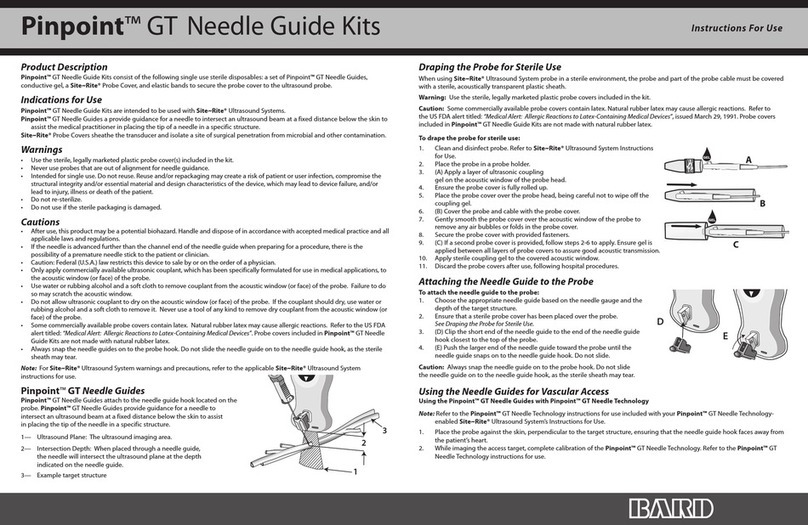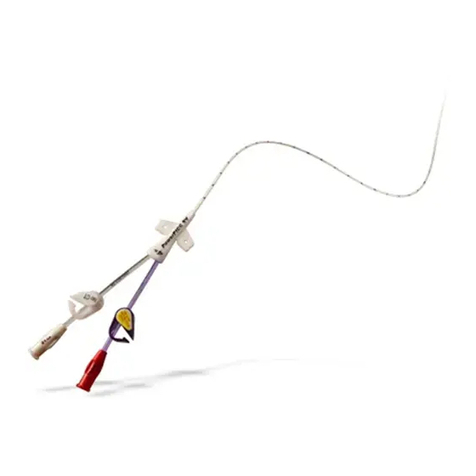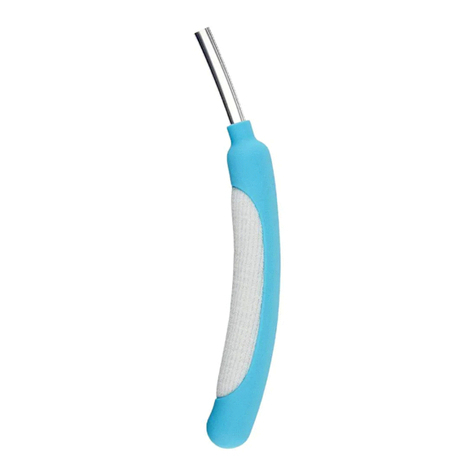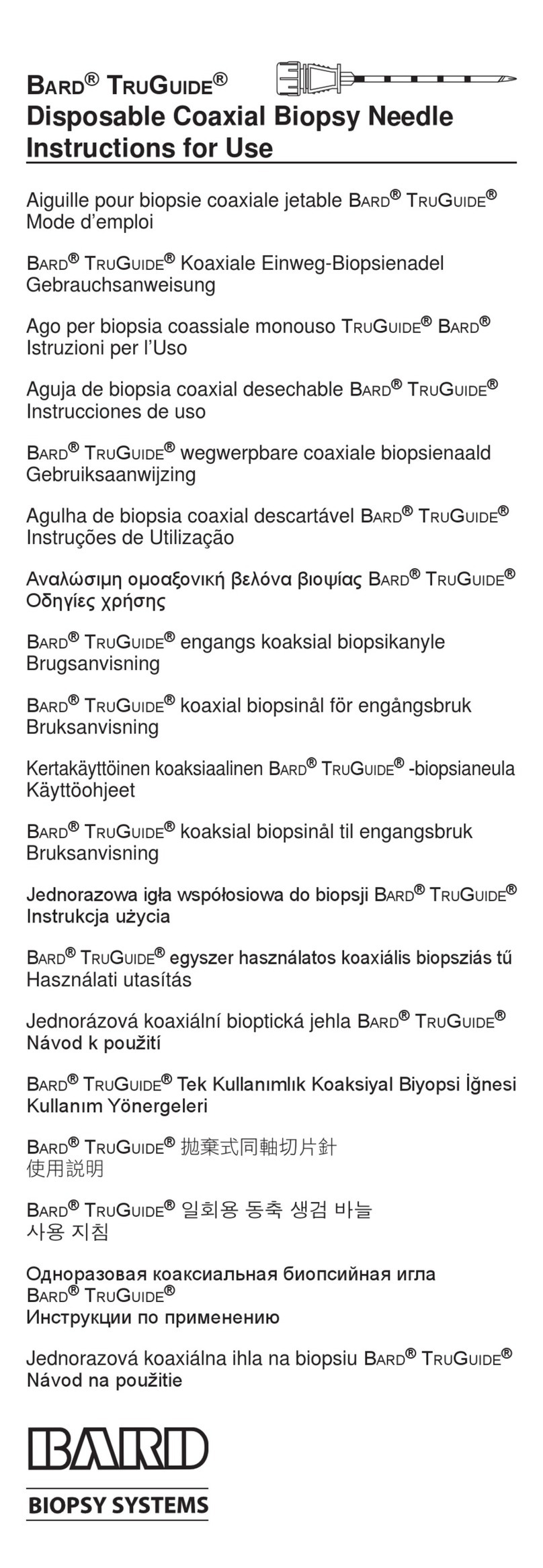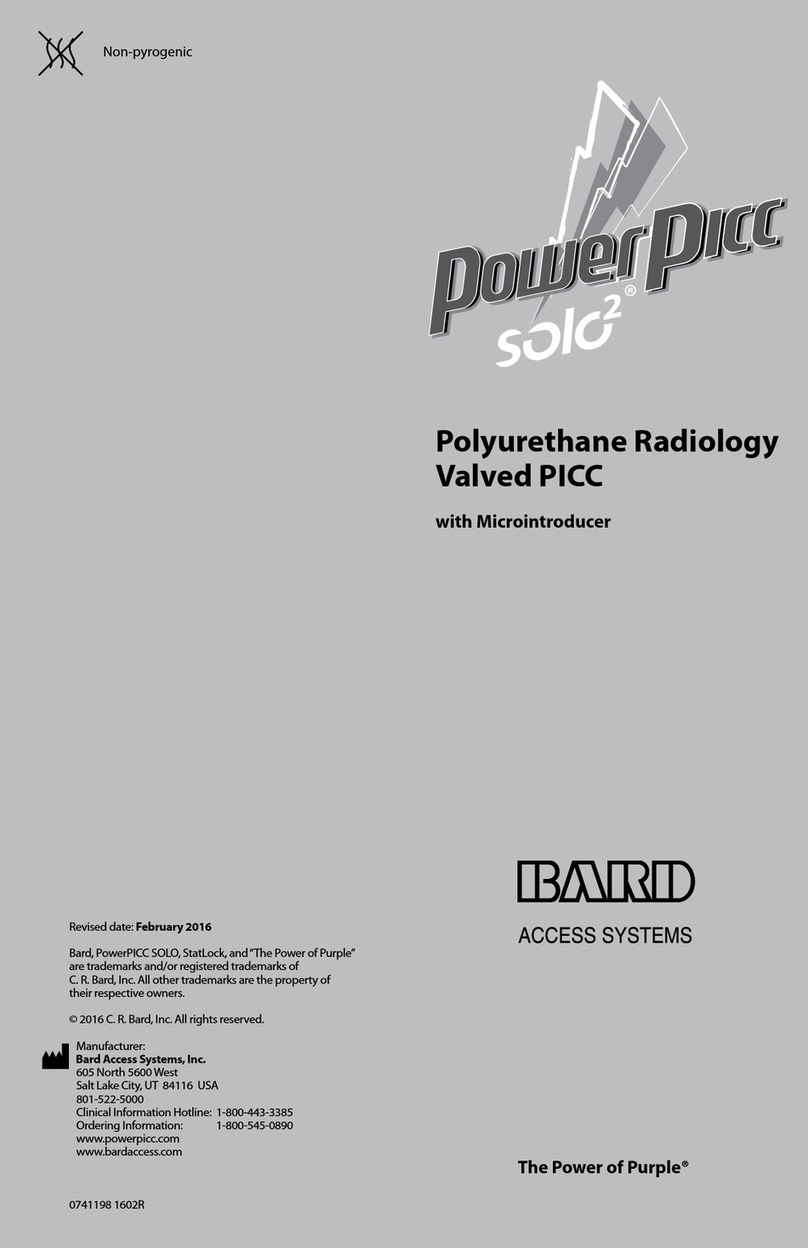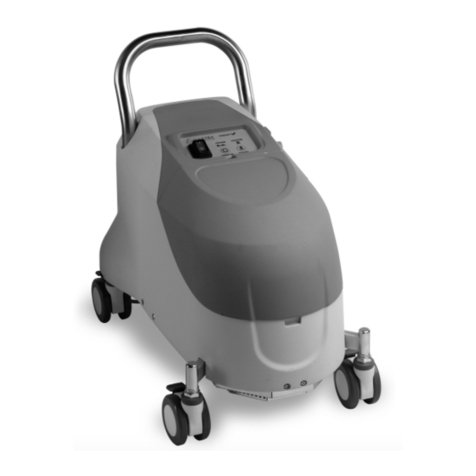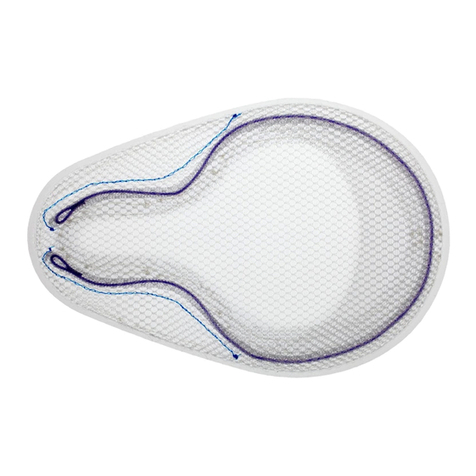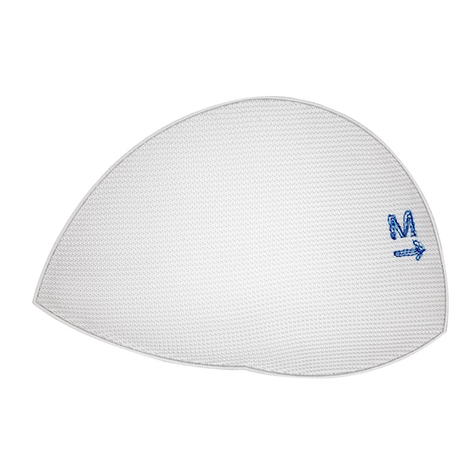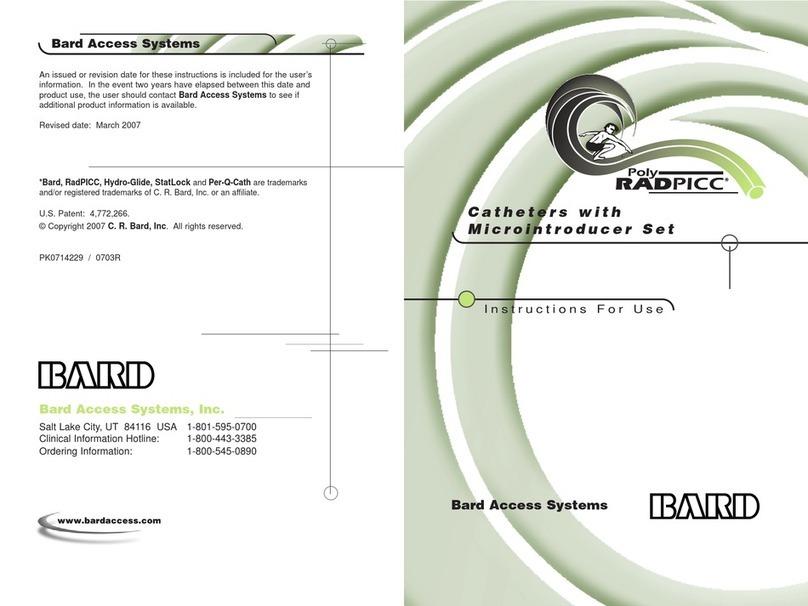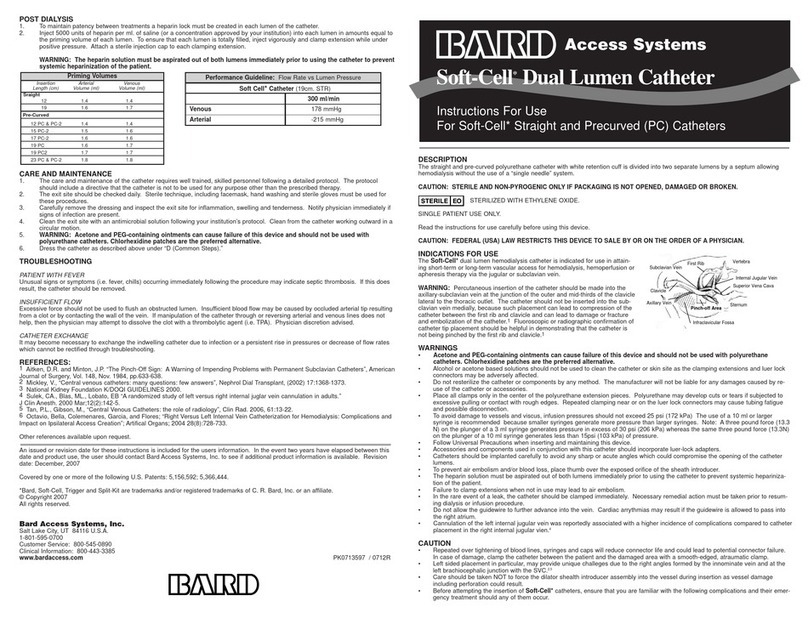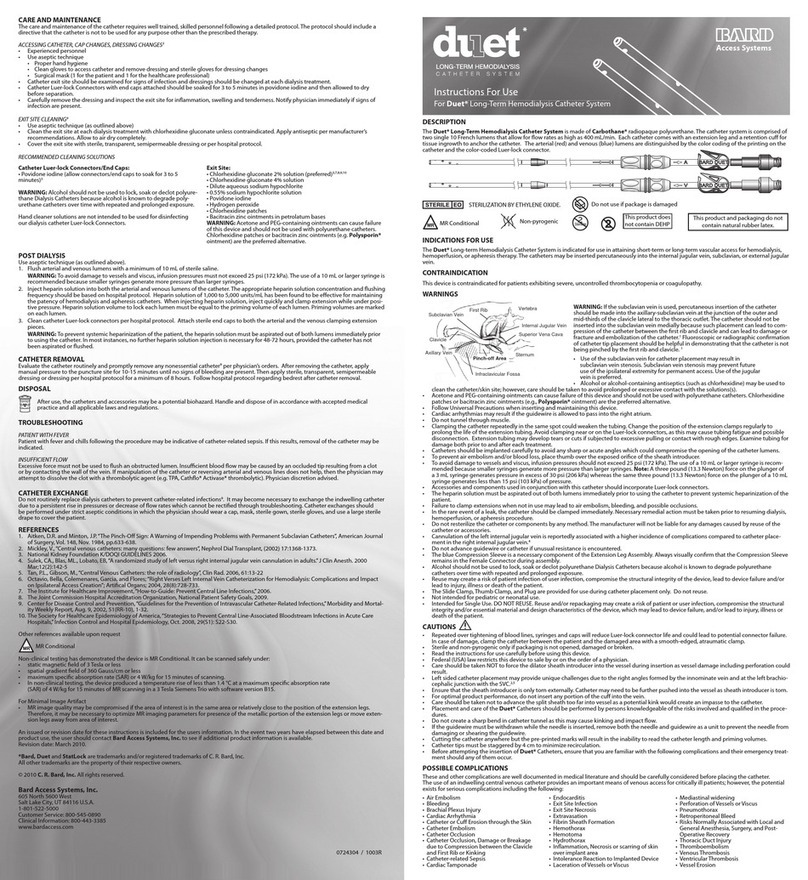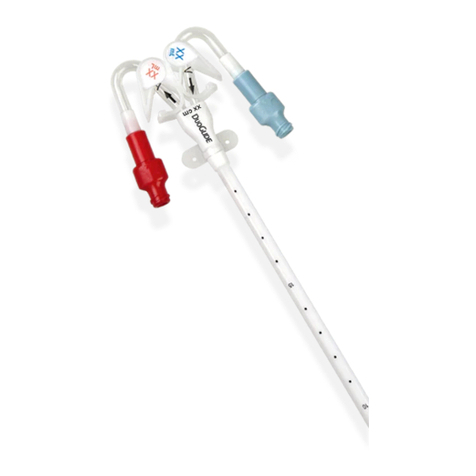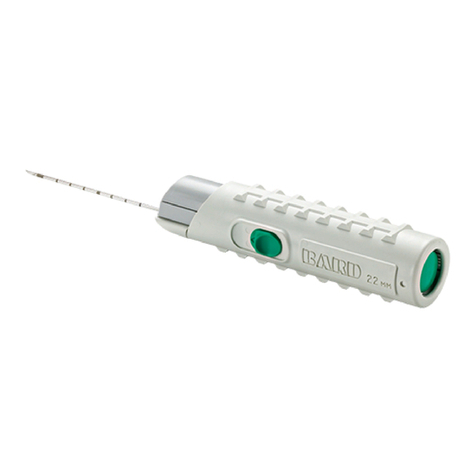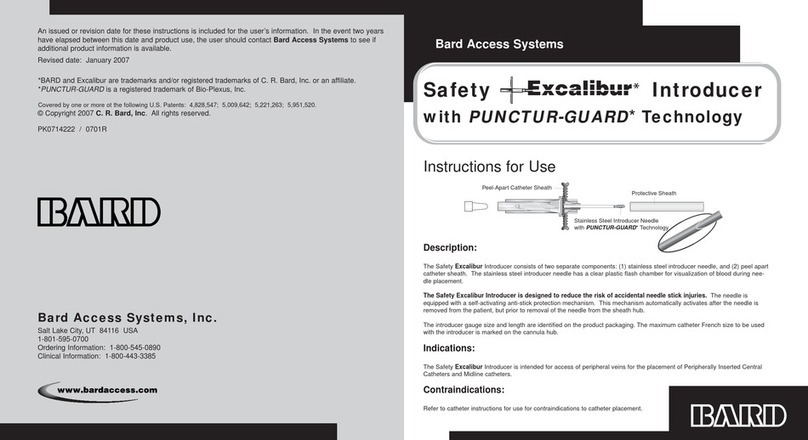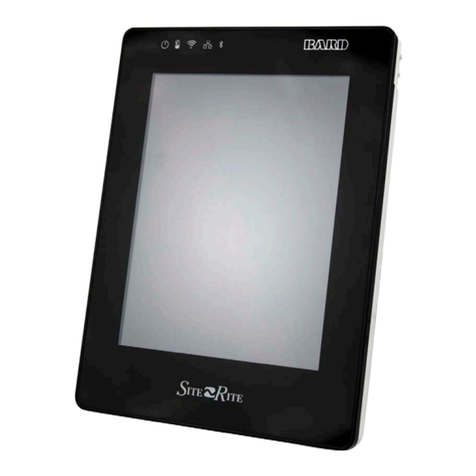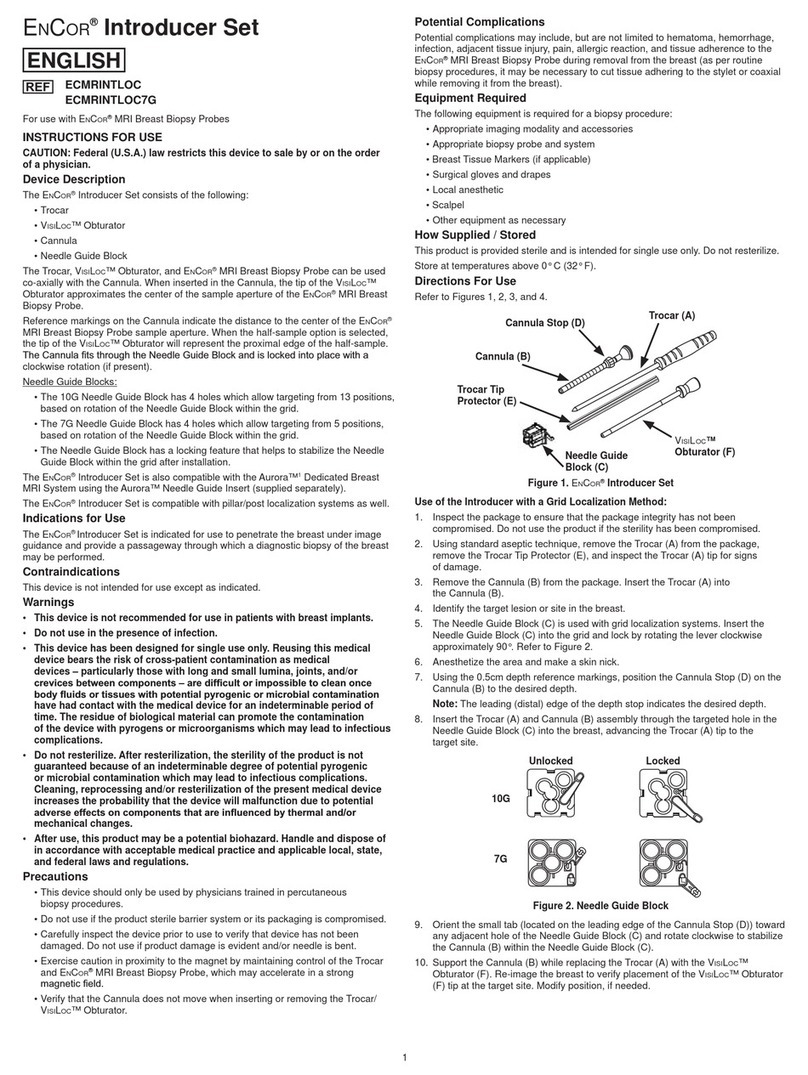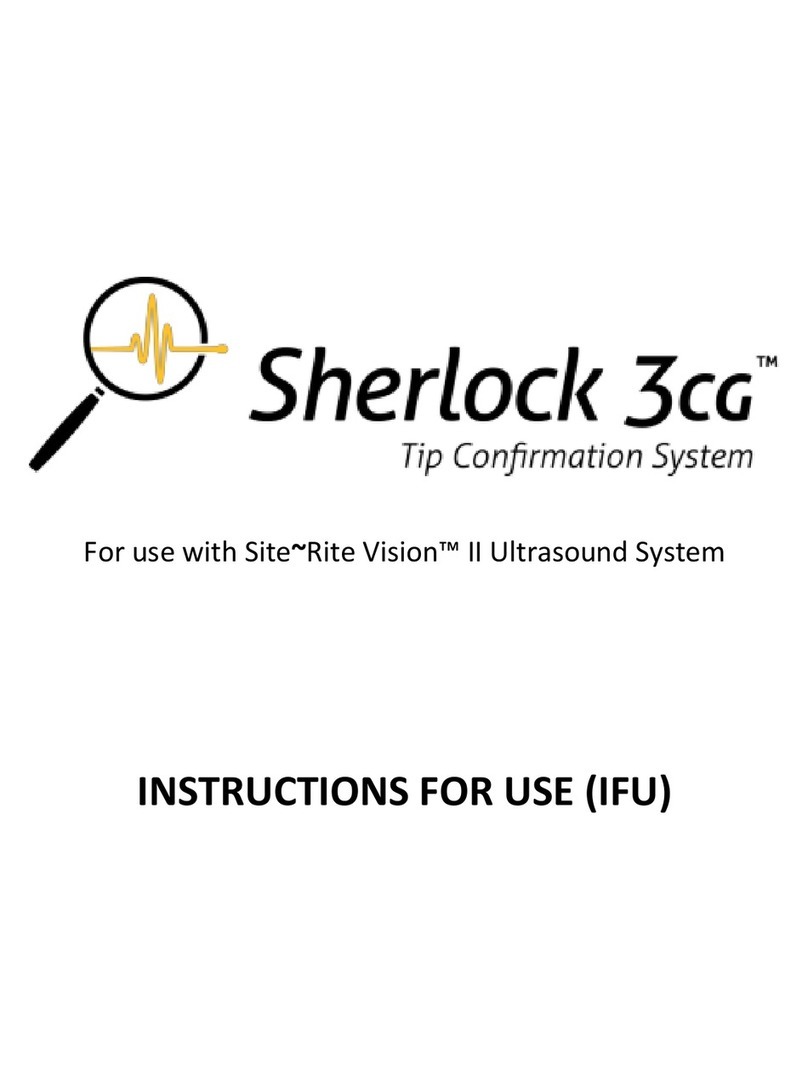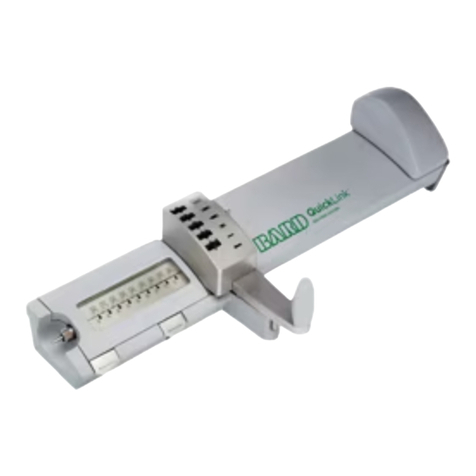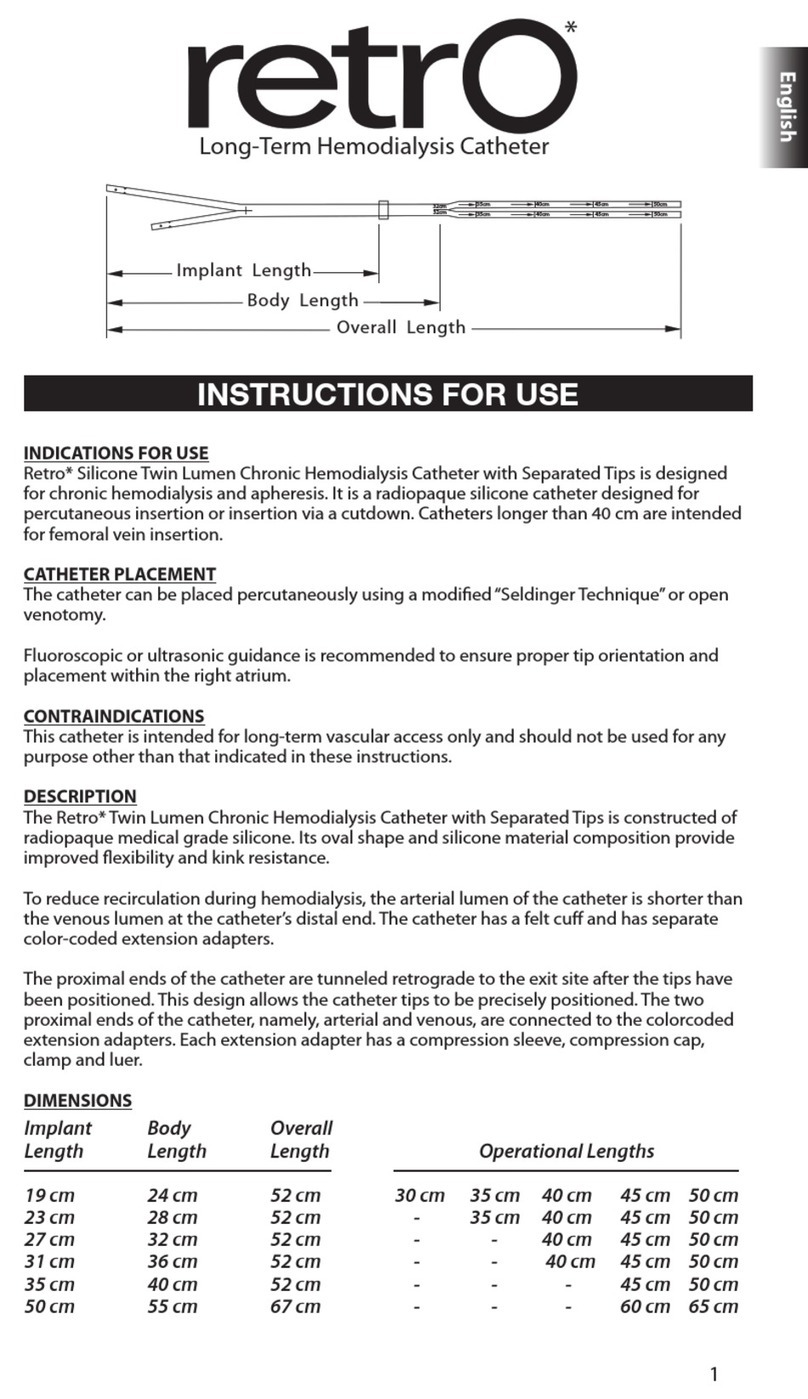•Avoid sharp or acute angles during implantation which could compromise the
patency of the catheter lumen (SL only).
•Use suture wings to secure the catheter without compromising catheter patency.
•Do not place sutures around catheter.
•Do not use the device if there is any evidence of mechanical damage or leak-
ing. Damage to the catheter may lead to rupture, fragmentation and possible
embolism and surgical removal.
•Accessories and components used in conjunction with this device should
incorporate Luer lock connections.
•If signs of extravasation exist, discontinue injections. Begin appropriate med-
ical intervention immediately.
•Infusion pressure greater than 25 psi (172 kPa) may damage blood vessels
and viscus and is not recommended. DO NOT USE A SYRINGE SMALLER
THAN 10 ml!
Possible Complications
The potential exists for serious complications including the following:
• Air Embolism • Exit Site Infection • Phlebitis
• Bleeding • Exit Site Necrosis • Spontaneous Catheter
• Brachial Plexus Injury • Extravasation Tip Malposition or Retraction
• Cardiac Arrhythmia • Fibrin Sheath Formation • Thromboembolism
• Cardiac Tamponade • Hematoma • Venous Thrombosis
• Catheter Erosion • Intolerance Reaction to • Ventricular Thrombosis
Through the Skin Implanted Device • Vessel Erosion
• Catheter Embolism • Laceration of Vessels or • Risks Normally Associated
• Catheter Occlusion Viscus with Local or General
• Catheter-related Sepsis • Myocardial Erosion Anesthesia, Surgery and
• Endocarditis • Perforation of Vessels Post Operative Recovery
or Viscus
III. After placement, observe the following precautions to avoid
device damage and/or patient injury:
• To reduce potential for blood backflow into the catheter tip, always remove
needles or needleless caps slowly while injecting the last 0.5 ml. of saline.
• For those unfamiliar with the procedure, published studies and a video are
available from Bard Access Systems depicting insertion and maintenance
techniques.
• For further information or questions, please call 800-443-3385 or
801-595-0700.
•Follow Universal Precautions when inserting and maintaining the catheter.
•Follow all contraindications, warnings, cautions, precautions and instructions
for all infusates as specified by its manufacturer.
•Use aseptic techniques whenever the catheter lumen is opened or connected
to other devices. Chlorhexidine gluconate or povidone iodine are the suggest-
ed antiseptics to use. Acetone and tincture of iodine should not be used. 2%
Chlorhexidine/70% isopropyl alcohol swabsticks used for dressing changes
may be used.
•The fluid level in the catheter will drop if the catheter connector is held above
the level of the patient’s heart and opened to air. To help prevent a drop in the
fluid level (and thus air entry) while changing injection caps, hold the connec-
tor below the level of the patient’s heart before removing the injection cap.
•Examine the package carefully before opening to confirm its integrity and that
the expiration date has not passed. The device is supplied in a sterile pack-
age and is non-pyrogenic. Do not use if package is damaged, opened or the
expiration date has passed. Sterilized by ethylene oxide. Do not Resterilize.
•Inspect kit for inclusion of all components.
•Flush the catheter with sterile normal saline prior to use.
•Avoid accidental device contact with sharp instruments and mechanical damage
to the catheter material. Use only smooth-edged atraumatic clamps or forceps.
•Avoid perforating, tearing or fracturing the catheter when using a guidewire.
•Do not use the catheter if there is any evidence of mechanical damage or
leaking.
II.
To avert device damage and/or patient injury during placement.
I. Prior to beginning placement procedure, do the following:
4 5
Precautions
Precautions & Possible Complications
